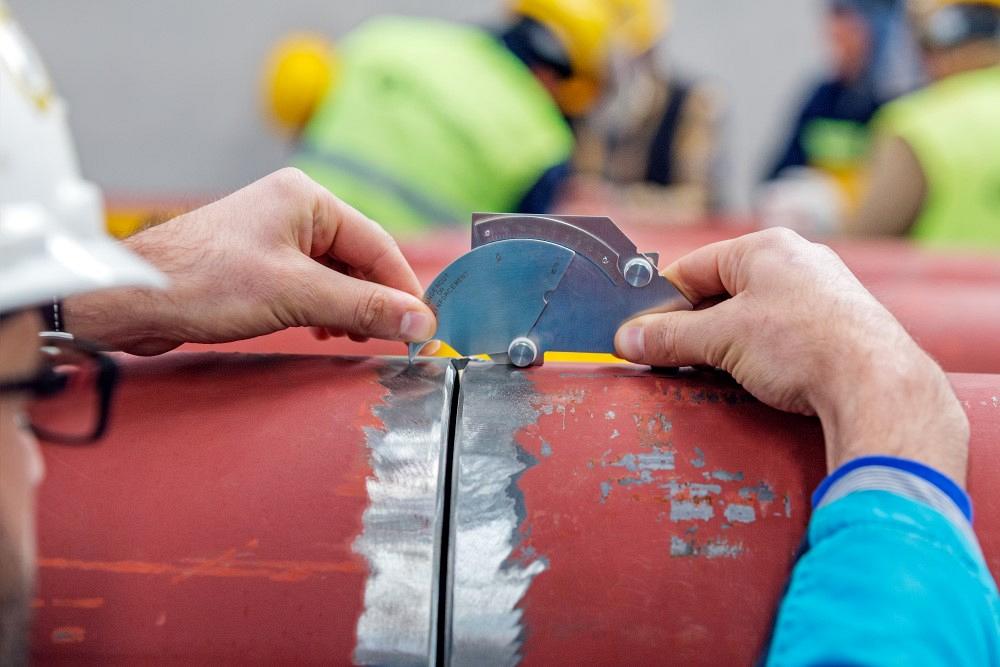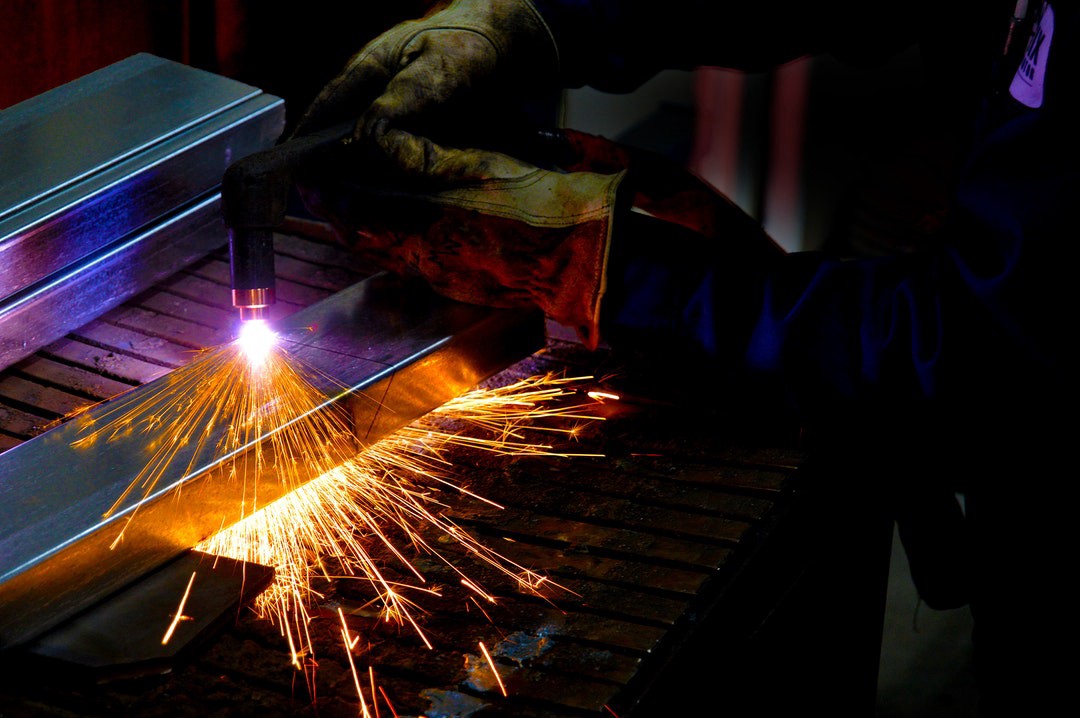Comprehending the Specifications for Welding Inspection Gilbert Arizona: A Total Introduction
Wiki Article
Checking Out the Importance of Welding Assessment in Industrial Applications: Safeguarding Versus Failures and Enhancing Long Life
Welding examination offers as a vital line of defense in industrial applications, making sure the structural integrity and reliability of welded components. By systematically determining defects such as porosity and incomplete combination, evaluations not only stop failures but additionally expand the life expectancy of important assets. Sticking to sector requirements boosts both safety and functional efficiency; nevertheless, the effects of overlooking these techniques can be severe. As we take a look at the diverse advantages of normal evaluations, it becomes obvious that comprehending these dynamics is not simply an issue of compliance however a calculated crucial for longevity and threat mitigation (Welding Inspection Gilbert Arizona).
Duty of Welding Assessment
Welding evaluation acts as a critical guard in industrial applications, ensuring that bonded structures meet defined requirements of quality and safety and security. This procedure involves an organized exam of welds to confirm their integrity, toughness, and compliance with established codes and requirements. The duty of welding examination is complex, including both visual analyses and non-destructive screening techniques, which may consist of ultrasonic, radiographic, or magnetic particle screening.
In addition, welding examination plays a vital role in regulatory compliance. Ultimately, the duty of welding assessment is indispensable in promoting safety, enhancing performance, and protecting investments in industrial infrastructure.
Common Welding Defects

One of the most prevalent issues is porosity, identified by tiny gas pockets entraped within the weld steel. This happens due to contaminants or improper shielding gas, compromising the weld's strength. Another significant defect is incomplete fusion, where the weld steel fails to bond correctly with the base product, possibly leading to architectural weak points.
Fractures can additionally develop during or after the welding procedure, frequently credited to thermal stresses or incorrect air conditioning prices. Additionally, damaging, where the base steel is worn down along the weld bead, can compromise the joint and is commonly triggered by extreme heat input or wrong strategy.
Furthermore, absence of infiltration occurs when the weld steel does not get to the origin of the joint, leading to inadequate toughness. Recognizing these typical flaws is crucial for welders and assessors alike to ensure that bonded structures fulfill security and performance criteria, inevitably stopping possible failures in industrial applications.
Advantages of Regular Evaluations
Routine examinations serve as an essential protect in making sure the integrity and longevity of welded structures. These examinations identify prospective issues and weak points that may compromise the stability of welds, permitting prompt removal prior to issues escalate. By executing a structured assessment regimen, companies can significantly decrease the risk of disastrous failings that might cause pricey downtime, tools substitute, and even crashes.In addition, regular inspections contribute to enhanced quality assurance throughout the welding procedure. By sticking to a regular examination timetable, firms can ensure that their welding practices fulfill well-known top quality standards and ideal methods. This not only fosters a culture of accountability but also urges continual enhancement among welding workers.
Furthermore, normal inspections facilitate far better official site upkeep preparation. By recognizing damage early, companies can purposefully set up fixings and replacements, decreasing interruption to procedures. This proactive method eventually brings about extended asset lifespan and enhanced total performance.
Finally, a commitment to regular inspections can enhance a firm's reputation in the sector. Stakeholders and customers significantly value organizations that focus on security and high quality, thus improving count on and potentially resulting in increased organization chances.
Sector Specifications and Regulations
Abiding by market criteria and policies is a fundamental aspect of welding inspection that matches the advantages of normal evaluations. These standards, developed by companies such as the American Welding Society (AWS) and the American Society of Mechanical Engineers (ASME), supply a structure for best practices in welding processes, materials, and assessment strategies. Compliance with these policies makes certain that welds fulfill the required high quality and safety and security standards, considerably minimizing the threat of architectural failings.Regulatory bodies like the Occupational Safety and Health And Wellness Administration (OSHA) additionally apply standards that protect workers and the environment during welding operations. By complying with these developed requirements, sectors can boost the reliability of their structures and components, ensuring they perform as intended under various operational conditions.
In addition, adherence to industry standards promotes uniformity in quality assurance, facilitating smoother communication among stakeholders and regulatory agencies. This alignment not only reduces obligation dangers but likewise enhances the trustworthiness of organizations in competitive markets. Ultimately, compliance with welding standards and regulations is not just a lawful responsibility; it is a crucial investment in safety, performance, and long-term functional success.
Future Trends in Welding Assessment
As markets remain to advance, the future of welding assessment is poised to incorporate sophisticated technologies that enhance precision and effectiveness. Among the most substantial patterns is the adoption of automation and robotics in inspection procedures. Automated systems can carry out inspections swiftly, decreasing human mistake and enhancing throughput in manufacturing atmospheres.Furthermore, the integration of fabricated knowledge (AI) and artificial intelligence formulas will make it possible for predictive analytics, permitting for real-time assessments and positive upkeep (Welding Inspection Gilbert Arizona). By evaluating information from previous inspections, these innovations why not try here can recognize patterns that could suggest possible failings, thus prolonging the lifespan of welded elements

In addition, the trend towards digitalization will cause boosted information management systems that help with much better tracking, reporting, and compliance with market requirements. In recap, the future of welding examination is identified by technological advancements that promise to considerably enhance dependability, security, and functional effectiveness in numerous commercial applications.
Final Thought
In verdict, welding assessment offers a crucial feature in making sure the stability and longevity of bonded frameworks throughout different industrial applications. By identifying defects such as porosity and incomplete blend, normal assessments play a substantial function in danger mitigation and quality control. Adherence to sector criteria and guidelines additionally improves operational security and reliability. As advancements in innovation remain to develop, the future of welding inspection assures raised precision and effectiveness, eventually adding to the longevity of crucial infrastructures.Welding assessment serves as an important line of protection in commercial applications, making sure the structural stability and reliability of welded elements.Welding inspection serves as a crucial guard in industrial applications, ensuring that bonded structures meet specified description criteria of high quality and safety - Welding Inspection Gilbert Arizona. Ultimately, the role of welding assessment is indispensable in promoting safety, boosting efficiency, and protecting investments in commercial infrastructure
These standards, established by companies such as the American Welding Culture (AWS) and the American Culture of Mechanical Designers (ASME), provide a framework for finest methods in welding procedures, products, and inspection techniques.In conclusion, welding evaluation offers a crucial feature in making certain the integrity and sturdiness of welded structures throughout different commercial applications.
Report this wiki page